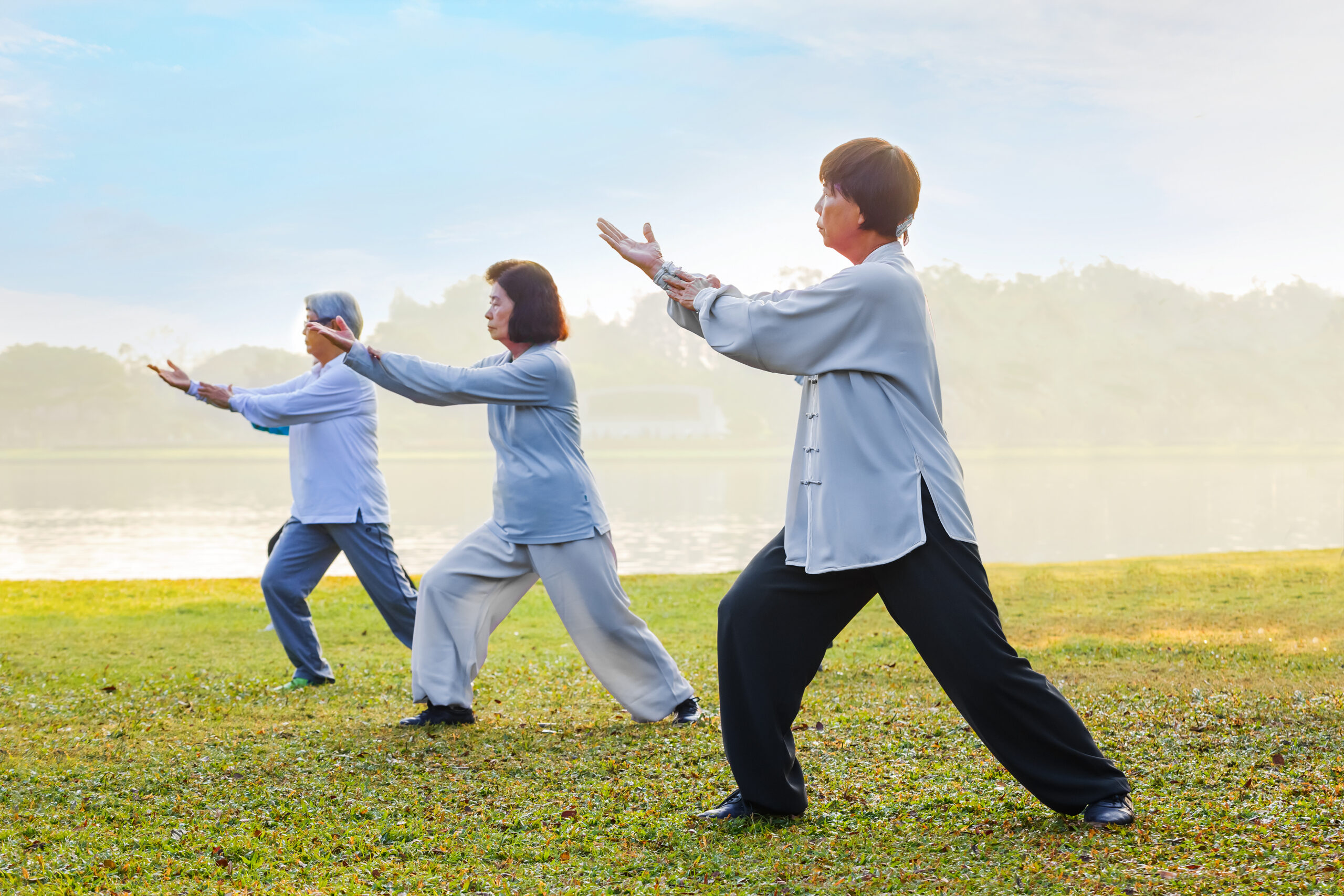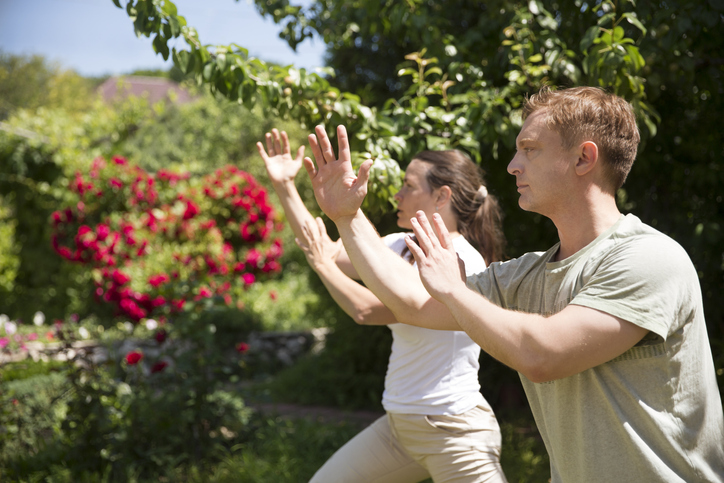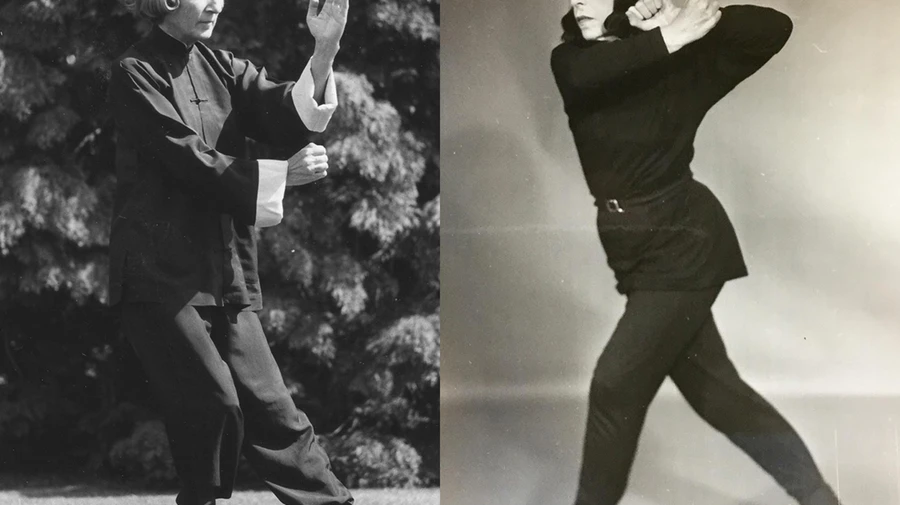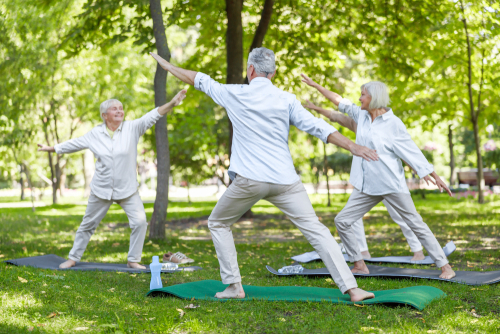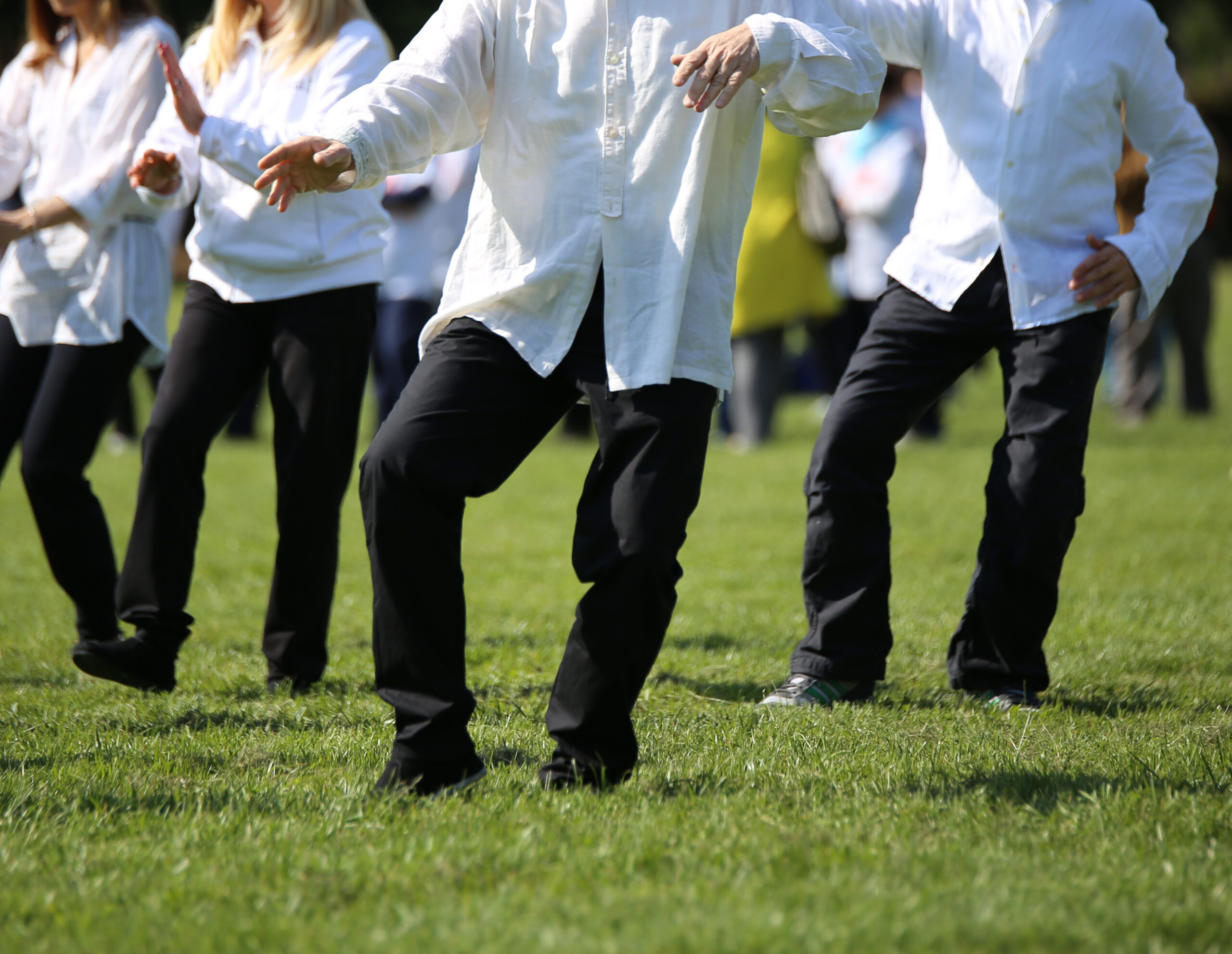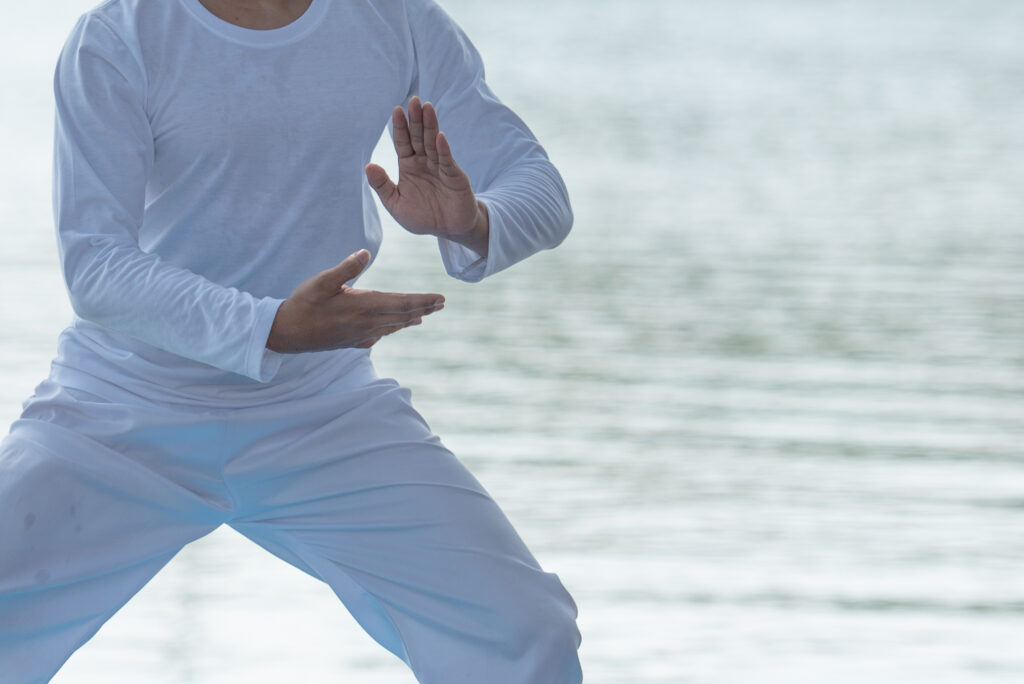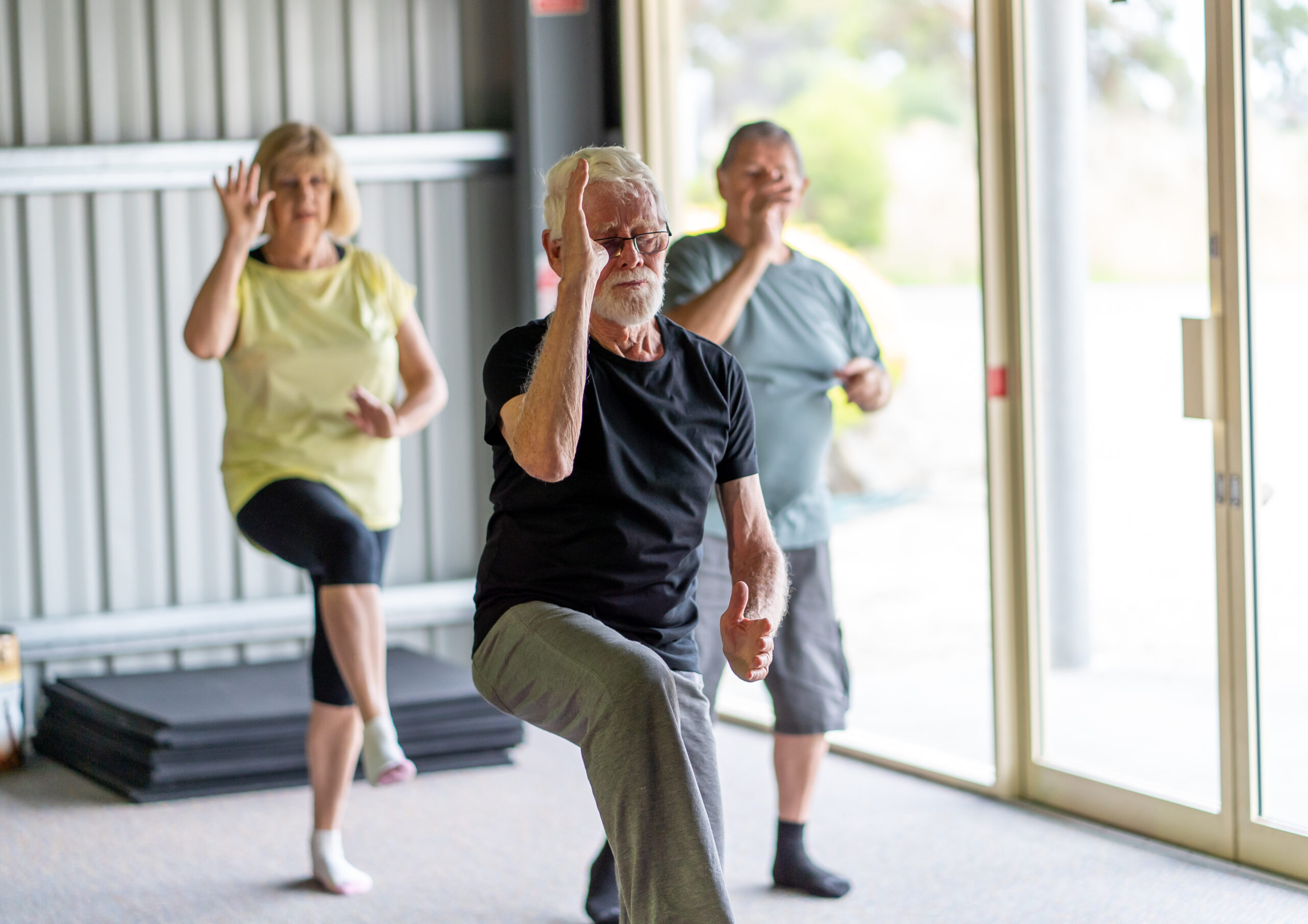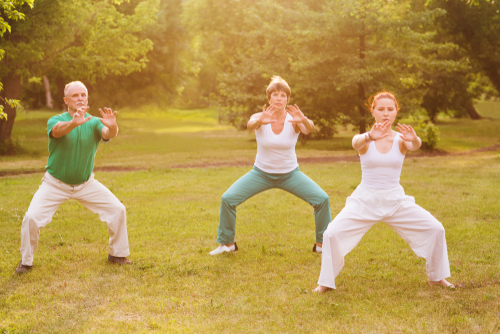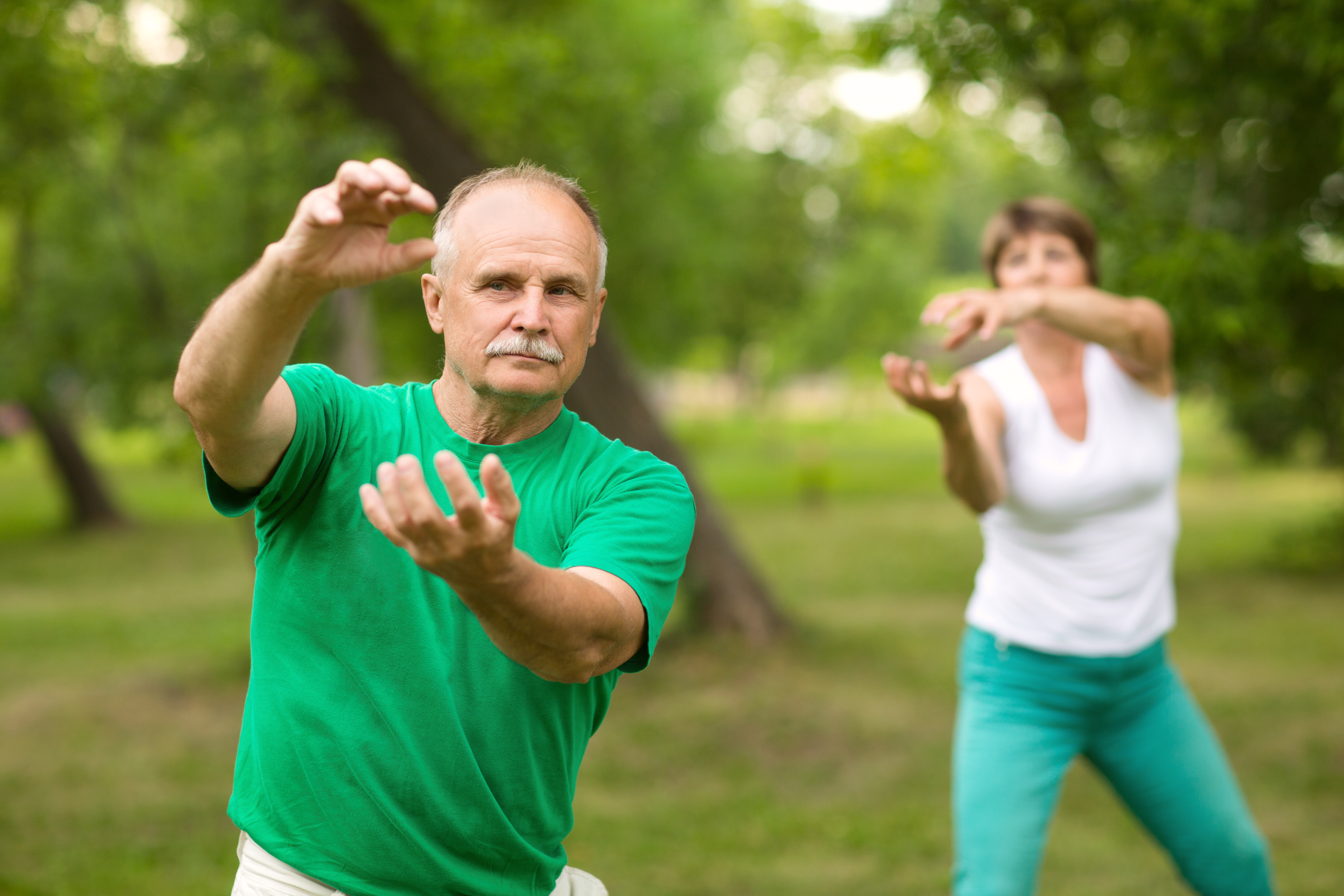
We often hear Tai Chi referred to as ‘meditation in motion‘. In other words, this mindful practice features fluidity of movement, control of breathing and mental concentration. Above all, It is gentle on the body. This makes it suitable for all ages and abilities. In addition, it can be effective for improving mental wellbeing and promoting healthy aging.
What is Tai Chi?
Tai Chi originated in ancient China as a martial art of great skill. However the basics can be simple to learn and soon deliver health benefits. For example, we introduce beginners to the practice through sets developed with medical experts by the Tai Chi for Health Institute.
These shortened sets, have movement forms which have been specially adapted for conditions such as arthritis and osteoporosis. The upright posture and easily adapted stances will put the least amount of stress on muscles and joints. The slow, gentle stretching and strengthening of the muscles will help with balance and mobility. They may be performed seated if necessary. Learning and practising in these safe and effective forms can improve flexibility, muscle strength and fitness.
When participants are ready, we move them on to the traditional forms of Tai Chi Chu’an. Research shows the forms can work to improve chronic conditions. For example heart disease, diabetes, respiratory diseases and many more.
Tai Chi with Movement In Mind
We use Tai Chi in our practice for it’s health benefits to mind and body. Firstly, it is excellent for training balance, reaction times, and co-ordination. It also improves posture and balance. At the same time it helps to strengthen vital internal energy. Secondly, the graceful slow motion, mindful stepping, mental imagery and visualisation involve focus and concentration. This helps to reduce harmful stress. In today’s fast-paced world, it is good to slow down and allow mind and body to connect. With regular practice Tai Chi will help to strengthen the body as well as greatly benefitting overall health and wellbeing.
There are numerous health benefits, regardless of which form you practice. At Movement In Mind, we focus on the ‘soft’ styles – Yang Style and Sun Style.
Yang Style
The most popular and widely practiced form of Tai Chi. It is characterised by smooth, flowing movement and weight transfer with foot adjustment. Yang Style improves flexibility by expanding and contracting the body using big, exaggerated movements executed slowly and gracefully.
Sun Style
The newest form of Tai Chi introduced in the early 20th Century. Sun Style has smooth, flowing movements and not the more physically vigorous crouching, leaping and explosiveness of some other styles. Its gentle postures and high stances make it very suitable for use as an alternative or complementary therapy for medical disorders. Sun-style incorporates unique footwork and gentle, flowing, circular hand movements. With its smooth, fluid movements and swift steps, Sun-style mimics a graceful dance.
Tai Chi with health in mind
In our wellness programme, we deliver sessions in a therapeutic, person centred approach. This recognises a range of learning styles and encourages participants to work to their ability. In other words, we allow them to find the appropriate level to fulfil their individual goals and intention.
As well as traditional Tai Chi, we offer adapted forms which are suitable for most health conditions and those who find the longer sets too challenging or difficult to remember. These are short combinations of traditional movements which are easy to follow and remember but have all the health benefits of Tai Chi.
Flowing Mobility Tai Chi
Simple Yang Style movements that flow together harmoniously and encourage full range of movement
Mindful Agility Tai Chi
Sun Style tai chi using weight transfer and careful stepping to improve awareness and reaction times
Grounded Balance Tai Chi
Yang Style movements travelling in all four directions to instill a sense of balance and control

